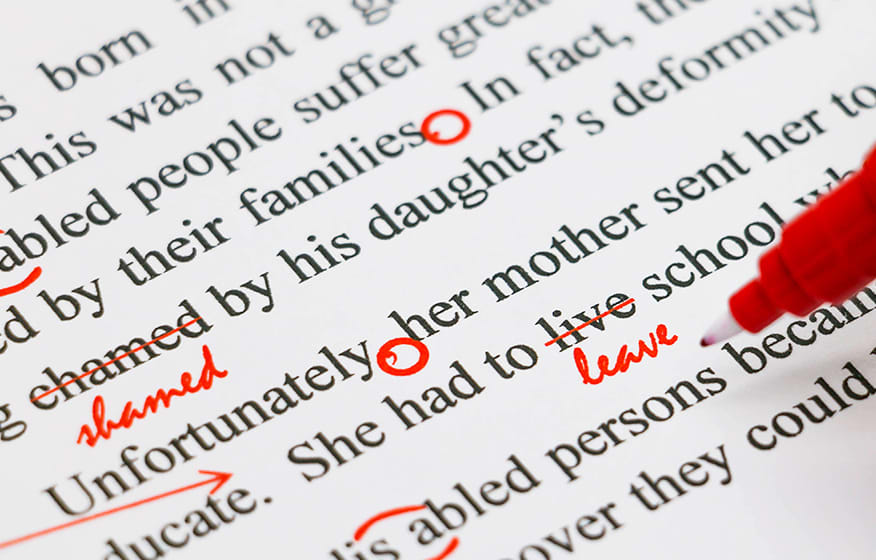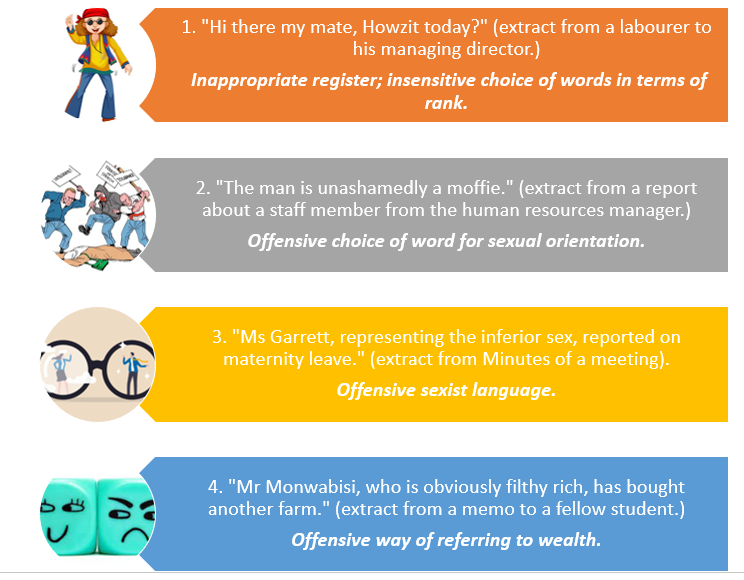
In this section, we will be looking, in some detail, at how you can use drafting and editing to improve your own writing. At all times you must remember that the purpose and audience are essential aspects to consider when it comes to your own writing.
What do we mean when we say you will learn to draft written texts?
A draft is a preliminary version of a piece of writing such as a speech, essay, or report. In other words, it is the work we do before we actually complete a piece of text. To edit means to prepare a text by correcting errors and ensuring clarity and accuracy.
Grammar Features
Let us now move on to look at how we can ensure that our written work is of as high a standard as possible. There are certain key things we need to be aware of when writing. These have to do with grammar, vocabulary, syntax (sentence structure) and paragraph structure. Let us look at each of these elements in turn.
Grammar refers to the system of rules by which words are formed and put together to make sentences. Correct grammar is important because it ensures clarity. It is extremely irritating to receive written documents that are ungrammatical. We can often get away with making grammar errors when we speak but it is not acceptable to make them when we are writing something.
If you are unsure of whether or not something is grammatically correct, rather express yourself more simply, in order to avoid making grammar mistakes.
English grammar rules can be quite complicated. If you are not sure whether you use correct grammar, try the following:

Consistency means the ability to maintain a particular standard or repeat a particular task with minimal variation. In other words, it means to maintain an even and equal standard.
How does this apply to sentences and paragraphs? Think of the length and tone of sentences. If the purpose of a piece of writing was to tell a story (narrative text) it would probably be appropriate to use quite long sentences. This would also be true in descriptive writing. It would become confusing in terms of clarity if the sentences were inconsistent in length and tone.
Logic and Unity
Now let us move on to look at how the logical sequencing of ideas and overall unity can be achieved through redrafting.
What do we mean when we talk about a "logical sequence"? This refers to the way ideas follow one another in a way that makes sense to the reader. Sometimes you can have very good ideas about a topic but because these are not presented in a well thought out way, the meaning of what you are writing about gets lost.
It is very important to make sure that your main points are arranged in a sensible and logical way. For example, if you were trying to explain to someone how to use a lamp, you would start by telling them to check it was plugged in because that is the logical place to start. It is the same principle when you are writing a longer text - the ideas must flow logically.
Removing Offensive Language
We are now going to look at ensuring that you do not use inappropriate or offensive language when you are writing. It is important in any form of communication to use appropriate and inoffensive language. This is, however, particularly true when dealing with people in positions of authority over you and informal settings. Friends may forgive you if they feel insulted, but strangers or our seniors will rarely be so forgiving!
What do we mean by offensive language? Offensive language is a language that is upsetting, insulting, or irritating; it is a language that causes anger, resentment, or moral outrage; e.g. "My parents find all the swearing on TV very offensive"; or "Aneesa finds people making fun of Islam very offensive".
All language that reflects a negative bias towards a group of people is offensive and inappropriate. You must avoid using such language in your writing. We also mentioned in an earlier Unit that extremely offensive language is classified as "hate speech" (even if it is written) and you can be prosecuted for using it.
How can we ensure that we do not use offensive language? One way is to think how we would feel if we read about our own cultural, sporting, family, or economic level being described in insulting terms. We would feel upset and possibly even angry.
Let us look at some examples of offensive writing:

At all times be aware that offensive language is potentially very harmful and destructive. Ensure that in your writing you avoid using terminology to describe people which could be classed as offensive. All racist, sexist, ageist, lookist (regarding the way people look) or ethnicist remarks are offensive and potentially very damaging. They will lead to a breakdown in communication and are to be avoided at all costs.
We need to look at the excessive use of jargon as examples of insensitive and inappropriate language use. These are to be avoided in written texts. What do we mean by obfuscation? Obfuscation refers to making something obscure or unclear, especially by making it unnecessarily complicated; e.g. "The directions on how to get to the party were obfuscated by so much detail, that we got lost."
Layout and Presentation Options
When considering the layout of your presentation or write up you need to remember that it needs to be appropriate to the nature and purpose of the task. With word processing and computers we now have a wide range of formats available to us when we need to present written texts. You should feel free to experiment with various things like fonts, font size, italics, the bold function and the space bar. Remember though to bear the context, purpose and audience in mind at all times.
You must feel free to experiment but always bear the following questions in mind:
- What is the context of your presentation?
- Who is the intended audience?
- What is the purpose of your written communication?
- Does your presentation lead to greater clarity?
You may like to develop a particular presentation style for each of the following:-
- Emails to friends.
- Emails to peers.
- Emails or letters to lecturers.
- Business letters.
- Reports for academic purposes.
- Any other form of written presentation, such as essays, that you do regularly.
- PowerPoint presentations
Click here to download a handout with an editing checklist.
The checklist serves as a tool for reviewers to use when checking a publication.